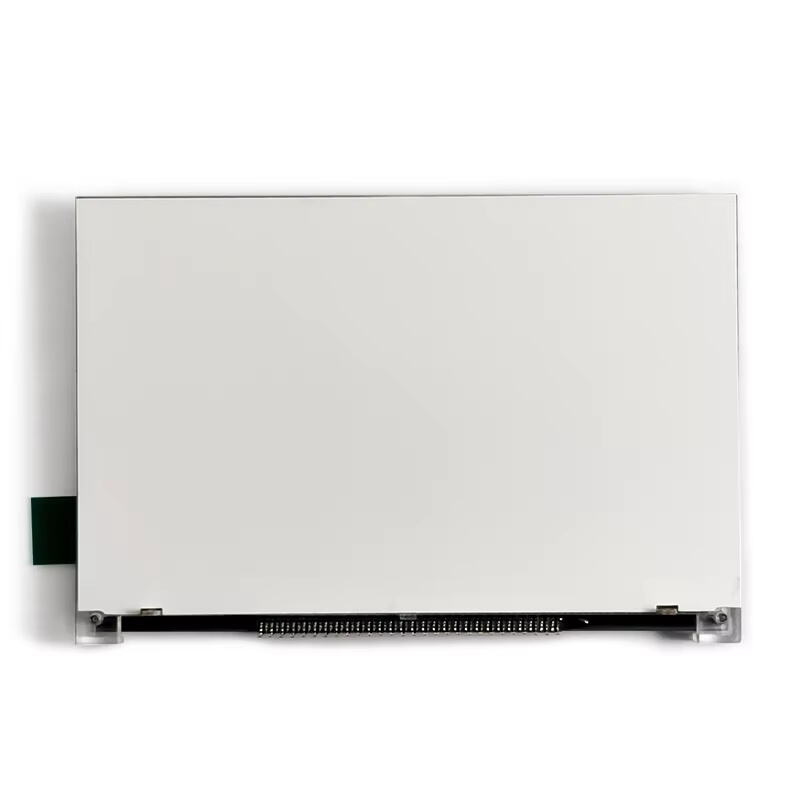Understanding the Versatile World of LCD Technology
Liquid crystal modules have revolutionized the way we interact with electronic devices and information displays. These sophisticated components combine liquid crystal displays with integrated circuit drivers and backlighting systems to create versatile visual interfaces. From everyday consumer electronics to specialized industrial equipment, these display solutions have become an integral part of modern technology.
Consumer Electronics Applications
Personal Device Displays
In the realm of consumer electronics, liquid crystal modules serve as the primary display technology for numerous devices we use daily. Smartphones, tablets, and laptops rely heavily on these modules to deliver crisp, energy-efficient visual output. The technology's ability to provide high resolution while maintaining relatively low power consumption makes it particularly suitable for portable devices where battery life is crucial.
Modern smartwatches and fitness trackers also incorporate specialized liquid crystal modules designed to function in various lighting conditions while maintaining excellent visibility. These compact displays must deliver clear information while withstanding the rigors of daily wear and environmental factors.
Home Entertainment Systems
Television sets and gaming monitors represent another significant application of liquid crystal modules. These larger format displays require sophisticated module designs to ensure uniform brightness, excellent color reproduction, and rapid response times. Home theater systems benefit from advanced liquid crystal modules that can handle high refresh rates and support HDR content.
Modern gaming displays utilizing liquid crystal modules often feature enhanced specifications such as ultra-wide viewing angles and minimal motion blur. These characteristics are essential for delivering immersive gaming experiences and maintaining competitive advantages in fast-paced scenarios.
Industrial and Commercial Applications
Manufacturing Equipment Interfaces
Industrial environments rely heavily on liquid crystal modules for human-machine interfaces. These displays must operate reliably in challenging conditions, including exposure to vibrations, temperature variations, and potentially harsh chemicals. Manufacturing equipment often incorporates ruggedized liquid crystal modules designed specifically for industrial use.
Control panels and monitoring systems in factories utilize specialized liquid crystal modules that can maintain visibility under bright lighting conditions while providing critical operational data to workers. These displays often feature enhanced durability and extended operational lifespans to meet industrial requirements.
Point of Sale Systems
Retail environments employ liquid crystal modules in various point-of-sale terminals and customer-facing displays. These modules must deliver clear visibility in varying lighting conditions while withstanding constant use throughout business hours. Modern POS systems often incorporate touch-enabled liquid crystal modules to enhance user interaction and streamline transaction processes.
Digital signage in retail spaces also relies on liquid crystal modules optimized for continuous operation and excellent visibility at various viewing angles. These displays play a crucial role in modern marketing strategies and customer engagement initiatives.

Medical and Healthcare Equipment
Diagnostic Devices
The medical field demands highly reliable liquid crystal modules for various diagnostic equipment. From ultrasound machines to patient monitoring systems, these displays must provide exceptional clarity and accuracy for medical professionals to make informed decisions. Healthcare applications often require modules with specific certifications and compliance with medical standards.
Laboratory equipment frequently incorporates specialized liquid crystal modules designed to display precise measurements and analytical data. These displays must maintain accuracy under various environmental conditions while providing clear visibility in laboratory settings.
Patient Care Systems
Hospital rooms and medical facilities utilize liquid crystal modules in various patient care applications. These include bedside monitors, medication dispensing systems, and therapeutic equipment displays. The modules must operate reliably around the clock while maintaining excellent visibility for healthcare providers working in different lighting conditions.
Modern telemedicine systems also rely on high-quality liquid crystal modules to facilitate remote consultations and patient monitoring. These displays must deliver clear, accurate visual information to support medical decision-making processes.
Automotive Applications
Dashboard Displays
Modern vehicles incorporate liquid crystal modules in instrument clusters and infotainment systems. These automotive-grade displays must operate reliably across extreme temperature ranges while maintaining visibility in varying lighting conditions. Dashboard displays often feature specialized optical treatments to minimize glare and enhance readability.
Advanced driver assistance systems (ADAS) utilize liquid crystal modules to provide critical information to drivers. These displays must deliver clear, instant feedback while maintaining durability in the automotive environment.
Entertainment and Navigation Systems
In-vehicle entertainment systems rely on liquid crystal modules to deliver multimedia content to passengers. These displays often feature wide viewing angles and high contrast ratios to ensure optimal visibility throughout the vehicle cabin. Navigation systems utilize specialized modules designed to maintain readability under direct sunlight.
Modern vehicles increasingly incorporate larger format liquid crystal modules for central information displays that combine entertainment, navigation, and vehicle control functions. These systems must meet stringent automotive reliability standards while providing intuitive user interfaces.
Frequently Asked Questions
What advantages do liquid crystal modules offer over other display technologies?
Liquid crystal modules offer excellent energy efficiency, high resolution capabilities, and proven reliability. They provide good visibility in various lighting conditions, have mature manufacturing processes leading to cost-effectiveness, and offer flexible design options for different applications.
How long do liquid crystal modules typically last?
The lifespan of liquid crystal modules varies depending on usage conditions and quality, but most modern modules are rated for 50,000 to 100,000 hours of operation. Industrial and automotive grade modules often feature extended lifespans due to enhanced design and materials.
Can liquid crystal modules operate in extreme temperatures?
Specialized liquid crystal modules are designed for extreme temperature operations, particularly in automotive and industrial applications. Standard modules typically operate between 0°C and 50°C, while industrial-grade versions can function in ranges from -40°C to 85°C.
What maintenance do liquid crystal modules require?
Liquid crystal modules generally require minimal maintenance beyond regular cleaning of the display surface. However, they should be protected from physical damage, extreme temperatures, and excessive humidity to ensure optimal performance and longevity.




